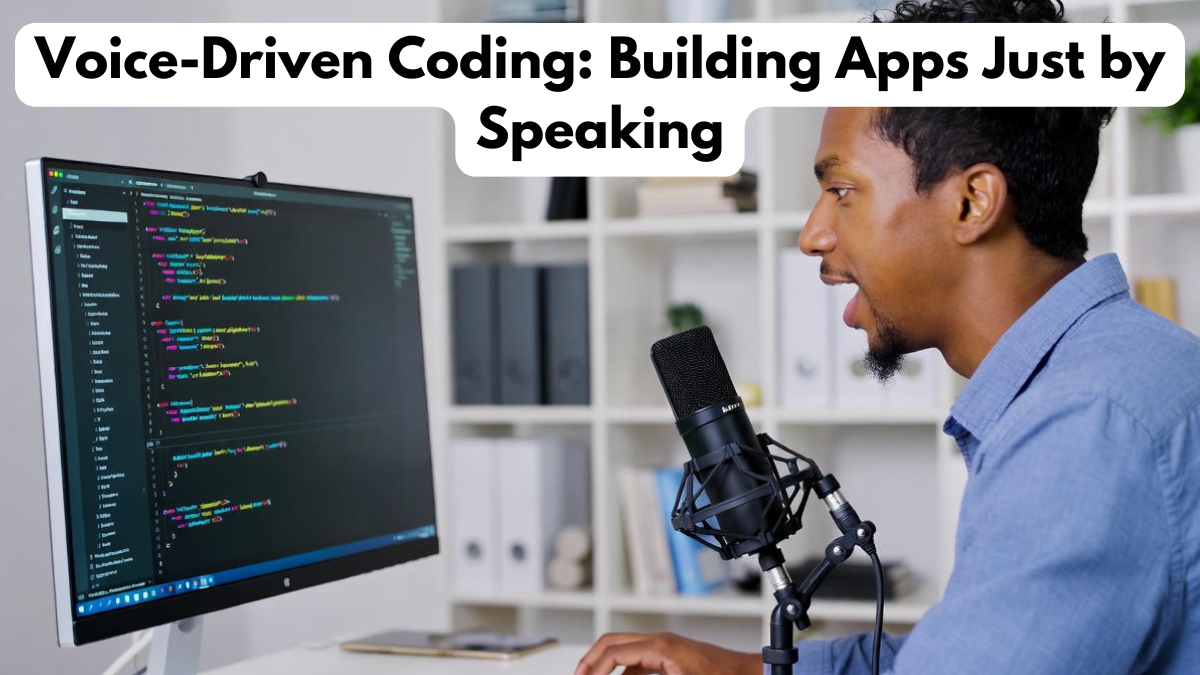The future of software development is being rewritten with the emergence of voice coding AI, a groundbreaking technology that allows developers to build applications using voice commands instead of typing. This evolution is making programming more accessible, intuitive, and faster than ever before. As the world shifts toward automation and simplicity, no code platforms are also rising alongside voice-driven tools, enabling people with no technical background to create software with minimal effort. Together, these innovations are transforming the development landscape and making technology creation available to everyone.

How Voice Coding AI Is Transforming App Development
Traditional coding requires hours of typing, debugging, and navigating complex syntax rules. With voice coding AI, developers can simply speak instructions, and the system translates those voice commands into functional code. This dramatically speeds up development and reduces repetitive tasks. The integration of no code platforms takes this concept further by enabling users to generate complete applications through voice-driven workflows and visual interfaces.
Voice-powered coding tools understand natural language, allowing developers to describe features, logic, and design elements as if explaining them to a colleague. The voice coding AI system then converts these spoken instructions into correct programming structures. Combined with the simplicity offered by no code platforms, app creation becomes faster, more intuitive, and accessible to millions of new creators.
Technology Behind Voice-Driven Software Creation
The effectiveness of voice coding AI comes from its sophisticated combination of natural language processing, machine learning, and intelligent code generation engines. These systems are trained on massive datasets containing real programming patterns and real-world development scenarios. When paired with no code platforms, they can even generate full applications by combining prebuilt components based on user commands.
Below is a table outlining the key technologies behind voice coding AI:
| Technology | Function | Benefit |
|---|---|---|
| Natural Language Processing | Understands spoken commands | Converts speech into code logic |
| Code Generation AI | Produces accurate programming syntax | Reduces human error and saves time |
| No Code Platforms | Provide drag-and-drop components | Simplify app creation without writing code |
| Speech Recognition Engines | Accurately detect voice input | Ensures precise instruction interpretation |
| Machine Learning Models | Learn user patterns and preferences | Improve accuracy and personalization |
Together, these systems empower developers to create applications more efficiently while minimizing manual effort. The combination of voice coding AI and no code platforms represents a powerful shift toward user-friendly software development.
Benefits of Voice Coding Technology
One of the biggest advantages of voice coding AI is its ability to democratize programming. From experienced developers to beginners, anyone can now build sophisticated apps without needing years of technical training. When integrated with no code platforms, the development process becomes even more streamlined and beginner-friendly.
Key benefits include:
- Faster coding through verbal commands
- Reduced physical strain from keyboard usage
- Easier debugging with natural-language explanations
- Increased accessibility for visually impaired or disabled developers
- Simplified app building using no code platforms
- Enhanced creativity thanks to intuitive voice workflows
These benefits not only improve the work environment for developers but also open opportunities for non-technical entrepreneurs, teachers, students, and creators to bring their app ideas to life.
Future of Voice Coding and No-Code App Development
The future of voice coding AI is incredibly promising. As artificial intelligence continues to improve, voice-driven development tools will become more conversational, proactive, and context-aware. Soon, developers may have AI assistants capable of suggesting improvements, detecting inefficiencies, or even writing full modules automatically. Meanwhile, no code platforms will continue expanding their libraries of prebuilt tools, making complex app functions easier to deploy with simple voice commands.
In the long term, entire software applications may be generated through natural conversations between humans and AI. Developers will collaborate with voice coding AI systems as if working with a skilled partner. The combined power of voice-driven tools and no code platforms will redefine how businesses innovate, how educators teach programming, and how creators bring their digital ideas to life.
Conclusion
The rise of voice coding AI marks the beginning of a new era in software development. With the help of no code platforms, individuals of all skill levels can create applications simply by describing their ideas out loud. This technology not only accelerates development but also democratizes it, making coding more inclusive, efficient, and intuitive. As the capabilities of AI continue to evolve, voice-driven coding will become an essential part of the digital creation process, empowering millions of people to build software with nothing more than their voice.
FAQs
What is voice coding AI?
Voice coding AI is a technology that allows users to write software by speaking commands, which are translated into code using no code platforms and AI engines.
Can beginners use voice coding tools?
Yes, voice coding AI is highly accessible, especially when combined with no code platforms that simplify app creation.
Are voice-driven coding systems accurate?
Modern systems are very accurate thanks to advanced speech recognition and machine learning models.
Will voice coding replace traditional programming?
Not entirely, but voice coding AI will complement traditional methods and make development faster and more intuitive.
Can voice coding help disabled programmers?
Absolutely. Voice-driven tools and no code platforms greatly improve accessibility for people with physical or visual impairments.
Click here to learn more